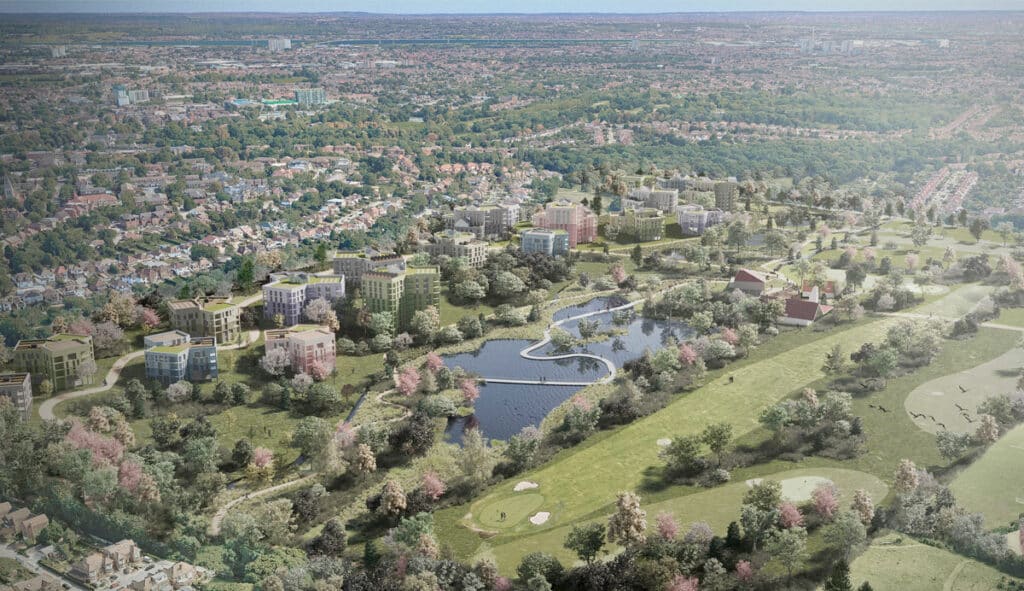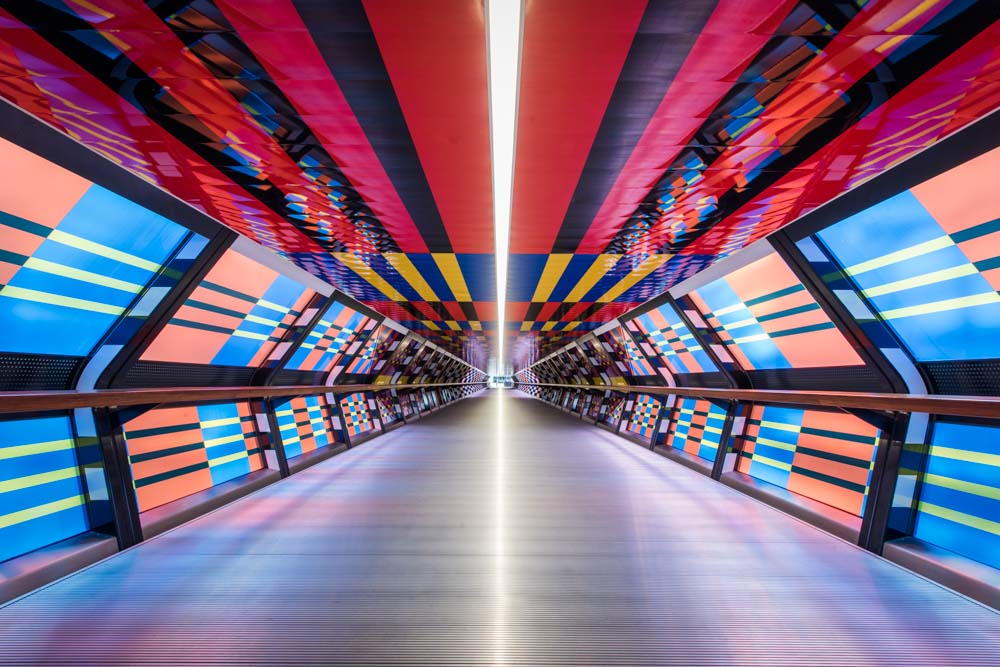One man’s radical plan champions turning underused green space into new social housing.
You’re probably painfully aware that London is in the midst of a housing crisis. Your rent is too expensive, if you want to move it’s a Sisyphean struggle. At the same time, homelessness is on the rise and there’s not much being done about it.
Architect-provocateur Russell Curtis thinks he might have the answer to alleviating some of the city’s housing woes: he wants to build social housing (among other things) on parts of London’s many golf courses.
His plan, known as Holes to Homes, has environmental concerns and equitable use of land at its core and has very much grabbed our attention. Here’s what he had to say.

First of all, would you just be able to introduce yourself and RCKA in your own words?
Sure. Well, my name’s Russell Curtis. I’m the founding director of RCKA, which is a small architectural practice of 25 people based in central London.
Our work covers a wide range of sectors, but it’s worth saying all of our work has a sort of social focus. So delivery of social value and that sort of thing is fundamental to most things we do. It’s something that underpins our practice.
Okay. And can you just tell me a little bit about Holes to Homes as well?
Sure. Well, this all started out a couple of years ago when, under lockdown, I was walking around, you know, when you were allowed to go out for a half-hour walk each day, and found it frustrating that a lot of the routes that I wanted to take were blocked by golf courses.
I happened to live in an area that’s sort of peppered with them. And so I began to wonder about the number and extent of golf courses in London. I took it upon myself to map them all and work out how big they are and who owns them.
There’s something like over 90, and together they take up a space bigger than the whole of Brent – so it sort of occurred to me that perhaps was not the most equitable use of land.
So it’s basically a lockdown project that grew legs and started running?
Yep, I published the research and then the practice decided to do a bit of speculative (and deliberately provocative work) on looking at what might happen if you were to take one of those courses and turn it into something that served a better use to society.
We focused on Enfield Golf Course partly because we know the area reasonably well. But also Enfield is a borough that’s facing profound housing challenges, particularly around homelessness and temporary accommodation.
I put it out on Twitter and I was amazed at how interested people were in it. It’s partly because it can be rather an emotive subject, can’t it? As soon as you talk about building on green space, people get very excited.
So should we be building on these green spaces?
I think [the decision] really has more to do with the proximity to things like tube stations and high streets, there’s no point building on a golf course that’s miles from anywhere, but if it’s within walking distance of a tube station, then it’s probably worth considering.
You could say the same about the Green Belt. It’s really just about using our green spaces effectively.
I think one of the important things is that what I’m not advocating is just building across the entirety of every golf course. I’m interested in how golf courses can serve more people. The proposal we’ve done in Holes to Homes is not just about housing.
It’s also creating diverse wetlands and nature reserve social infrastructure, cycling or walking routes, all of that sort of stuff, and keeping nine holes. I think we can balance all of these things.

How realistic an ambition do you think it is to actually get this done?
Actually, it would be ludicrous to suggest such a thing. Planning policy, particularly in London, is very much against the idea of building on any kind of open space
Without getting too planning geeky, almost every course in London, with only one or two exceptions, is either green belt or something that’s called metropolitan open land, which is a planning designation which effectively gives you the same level of protection.
But as it happens we have had some very interesting inquiries from several courses about the potential for some element of development.
I think a lot of the courses would actually welcome some degree of development because it might generate some additional income for them to be able to upgrade their facilities and perhaps give their club a little bit more of a life, but keep a part of the course.
Amid the housing crisis, there are almost shades of should we even be having this kind of conversation, right? Shouldn’t the government be doing something about it?
The problem is that any discussion like this very quickly becomes ideological. I think there are practical solutions to all of this. Nobody can deny that we have a profound housing crisis and we particularly have a crisis in affordability.
The levels of families in temporary accommodation and unstable house situations have rocketed so something has to give.
Now I’m not suggesting for one minute that building on golf courses on the green belt or anything is going to be the silver bullet. The core of all of this but we have to take a pragmatic approach to housing.
What are the issues holding up this kind of forward-thinking development?
The planning system is just not working at the moment. It’s way too unpredictable and it’s subject to political interference. It also takes way too long and it’s way too expensive. All this just generates risk and where there’s risk there’s uncertainty and that’s where developers profit.
If you really want to build lots of new homes, you need to make the planning system much more predictable. Some degree of Green Belt reform would probably sense.
Thanks for speaking to us, Russell. Anything you’d like to add?
I think it seems almost inevitable that Sadiq Khan is going to have a third and final term. So in that case I would advocate that his new London Plan, which sets out his vision for London over the next decade, should be much bolder.
I think that he can start to perhaps lower some of the barriers to building on the open space in the right places and strengthen it up in others.
It’s about time we took a look at, or at least did some investigations into whether [this legislation] is achieving the things that we needed to achieve.
Read More London Housing Guides and Stories
- Where’s Good to Buy and Rent in London: Property Professionals on Navigating London’s Housing Market
- Kingswood House: The Landed Home that Went From Country Estate to Council Estate
- House-Sitting in London: All the Best Options for Finding a Place to Take Care of as if It Was Your Own
- What’s It Like Being a Property Guardian in London?



